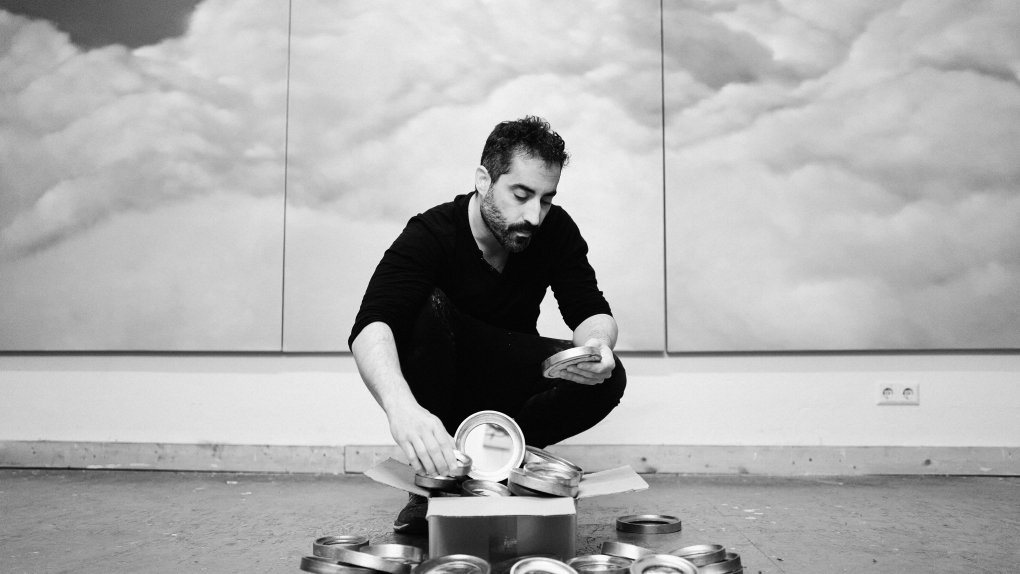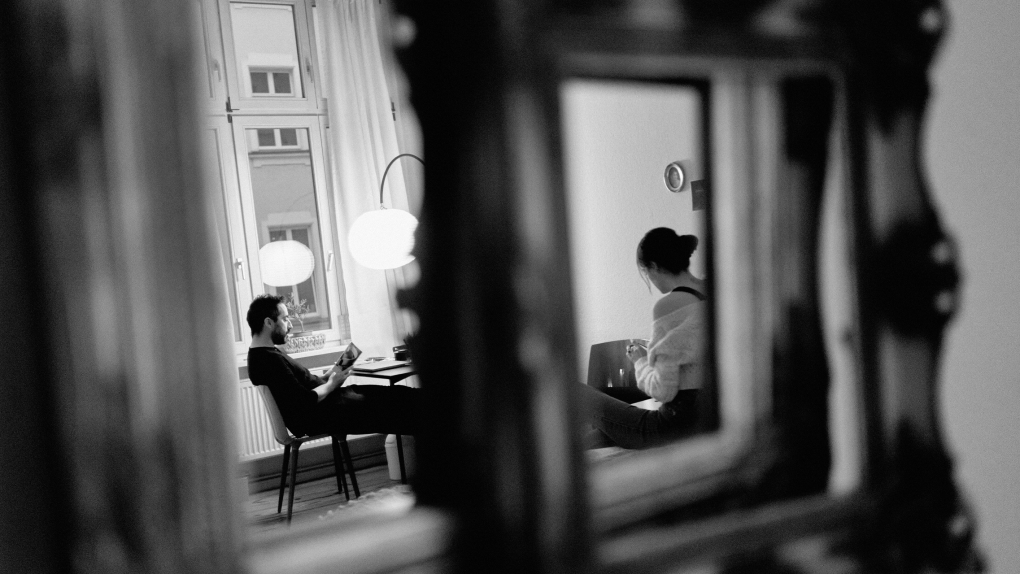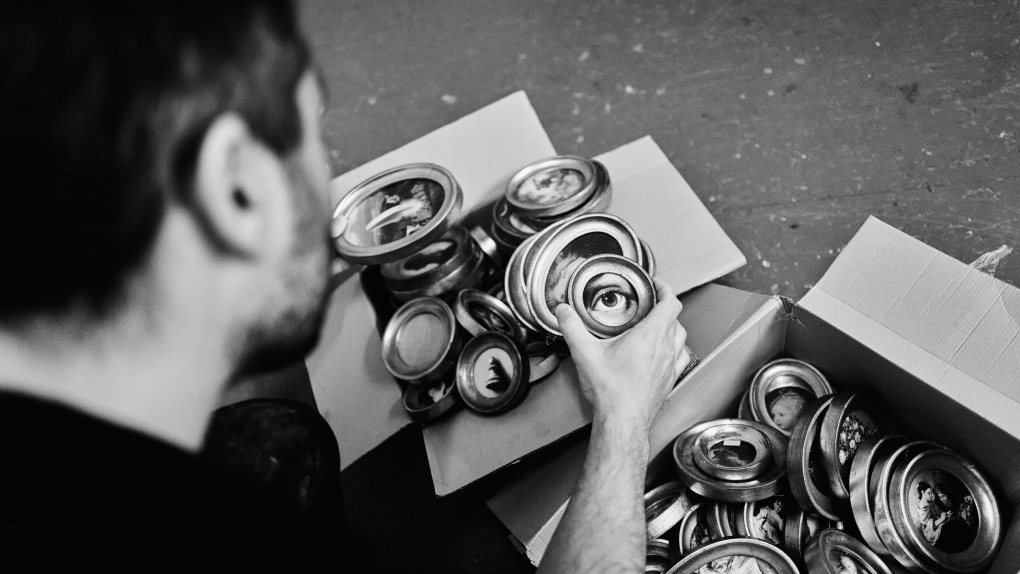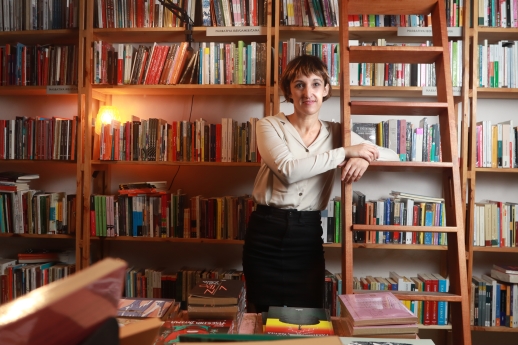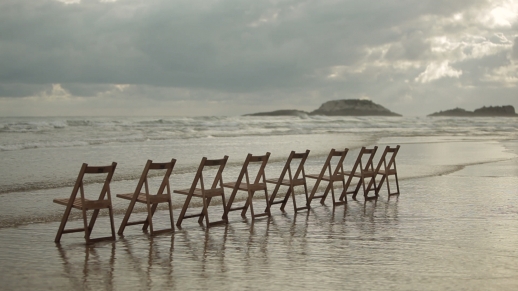On one wall of the Guggenheim Museum in Bilbao hang 40 small paintings. Facing us, we see a landscape or a sparrow, a gaze, a feather, and a mirror reflecting the visitor in 19th and 20th century circular and oval gilded frames. The author of this time-defying mosaic is Alain Urrutia.
Alain Urrutia, challenging the passage of time
02 Feb 2023The quickest way to discover and understand the artist is by taking route that leads to his studio, which means going to the Prenzlauer Berg district of Berlin. His house is in a lively street next to the S-Bahn train line. And it is there, in the basement, that he spends his mornings, afternoons and, from time to time, evenings. There, in his studio, dipping ideas in oil and turning them into paint.
Born in Bilbao in 1981, Urrutia studied Fine Arts at the University of the Basque Country, and spent 2001 at the Brera Academy in Italy. There he specialised in painting, but mainly due to a bureaucratic error or semantic misunderstanding. He had intended to study design, but in Italian the meaning of the word is very different: the term ´Disegno´ means drawing. So, fortunately for us, since then he has had a prolific career. Urrutia has participated in the world’s leading art fairs and his works have been exhibited in prestigious museums and art galleries, taking contemporary Basque art to the international stage.
There is no quick way to do things. We´ll get to where we need to be, or maybe not.
We open the dented iron door and walk towards the studio. Small as the basement is, there is room for the inner world of a great artist. To the left is the cellar that serves as storage for the owner, who himself is a collector and has several works of art wrapped in cardboard and stacked against the walls, waiting to find someone to hang them. To one side, two rusty mountain bikes. We turn right and enter a white-walled room of about 15 square metres. Behind us, a window lets in the dim light of Berlin. We smell the pungent odour of paint as we move forward. On the floor, a handful of frames. A clock stopped on 29 October hangs on one wall, and three or four paintings on the other, which will probably be included in the next exhibition. "I´m working on works for an exhibition in Milan," Urrutia explains.
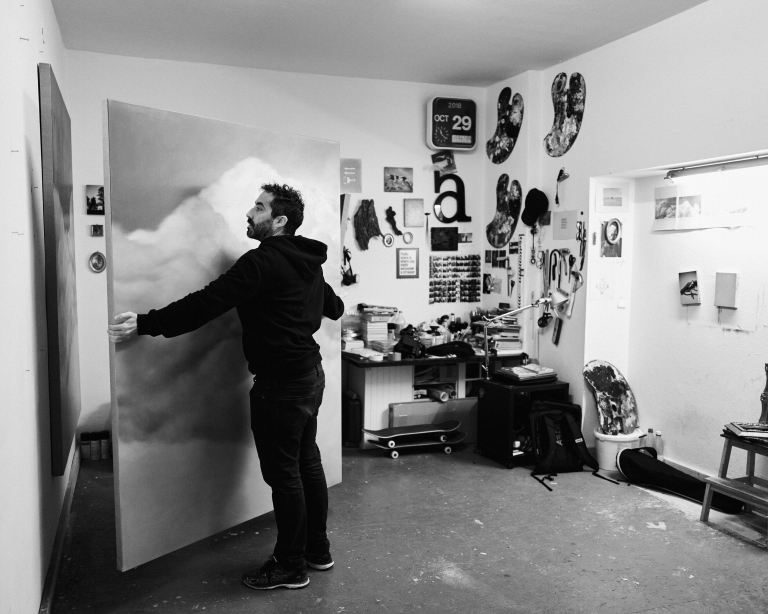
Alain Urrutia works with tones that range from black to white. He searches in his palette for the nuances of Ansel Adams´ greyscale. Thus, one of his trademarks is a preoccupation with black and white, an aesthetic that permeates even his wardrobe. "I don´t know if there’s a straight path, but it´s clearly not the one I´ve taken," he explains. "They say that the direct path is the shortest, but in art there are no shortcuts. There is no quick way to do things". Alain is in no hurry, nor does he have a specific destination: "We´ll get to where we need to be, or maybe not”.
Urrutia´s works convey a certain sense of immortality. While contemporary, they contain vestiges of centuries past. The body of Saint Sebastian riddled with arrows. A dolmen. A recently extinguished smouldering candle. But they also somehow hint at what is yet to come. The landscape of an extrasolar planet. Clouds in the shape of a mountain. Like Rafa Berrio in his songs, he paints objects that will outlive us; coins in one hand, sheets or a porcelain tiger protecting a quince and a pearl necklace on a book.
The defiance of time pervades everything. Memory, and therefore oblivion, is present in every piece. Some say that art is a way of avoiding death, because you will leave behind an expression that will remain forever. "I don´t care what they think when I´m gone, let them burn the paintings if they want," says Urrutia. "In fact, if I ask them to burn my paintings after I die, I hope they respect my wishes”.
The artist brought a cardboard box that he had put aside in a corner of the studio. And with the care of a watchmaker handling screws and gears, he takes out one of the 40 small paintings he has exhibited at the Guggenheim. Round, oval, varied – every year he adds one to the collection.
One painting for each year of life. A work that is not for sale and that will remain unfinished until death.
